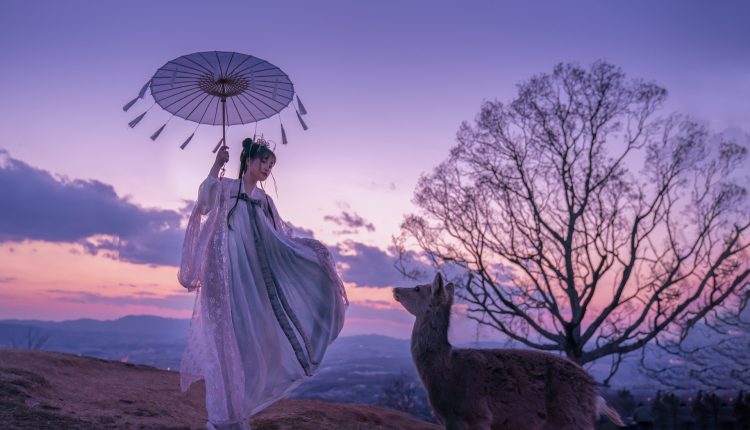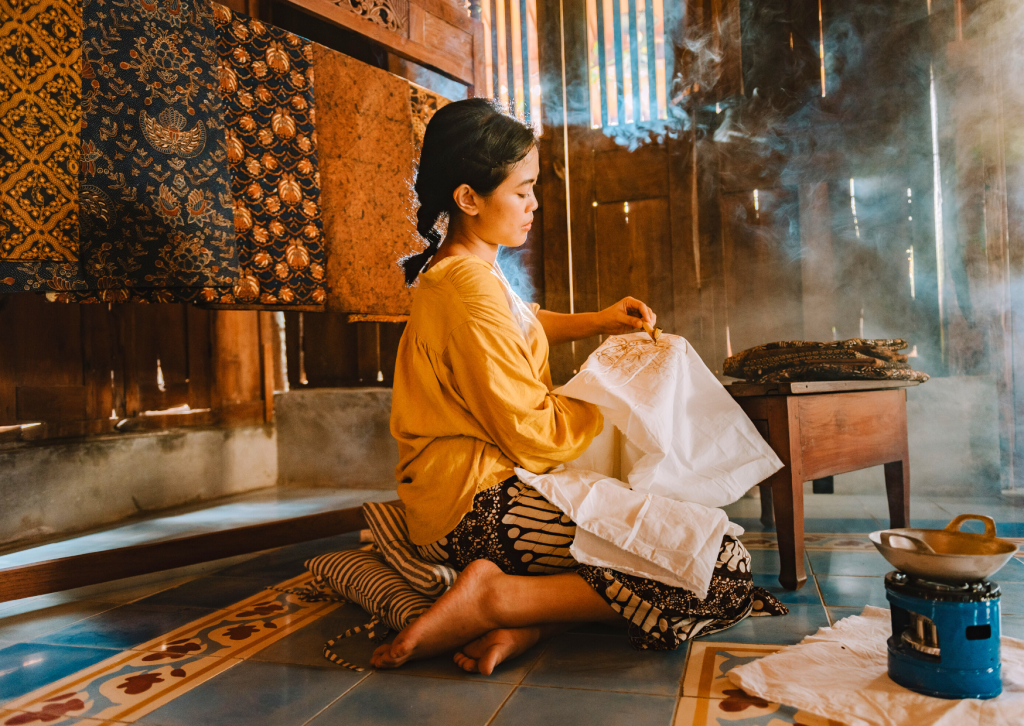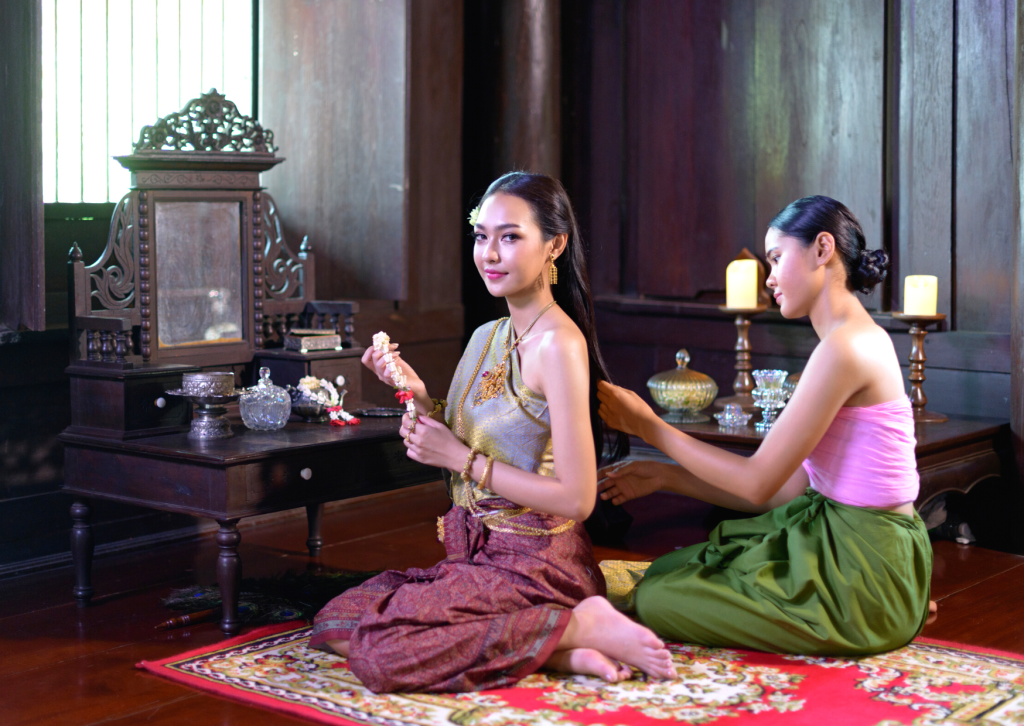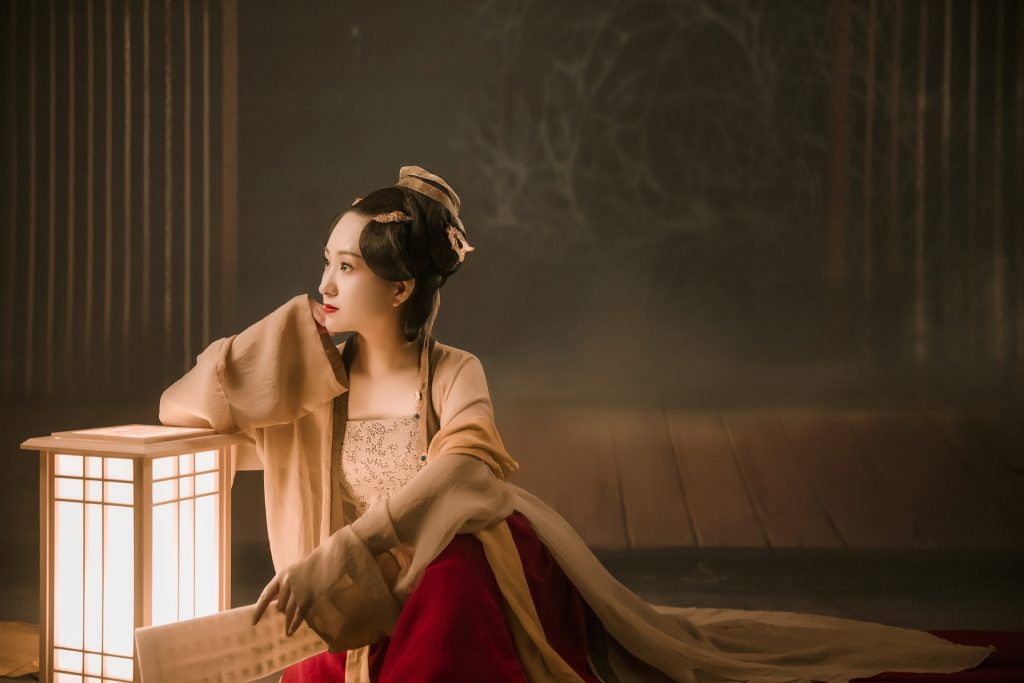A Journey in Time and Culture through Asia’s Textiles and Fabrics
For thousands of years, fabrics and textiles have served human civilizations not just in the form of garments, but also as a symbol of tradition, identity, and culture. Fascinatingly, textiles in Asia have played a crucial role in shaping the region’s rich cultural heritage, with each country possessing its own unique designs, patterns, and crafting techniques. From intricate hand-woven fabrics to bold and vibrant prints, Asian textiles are renowned for their beauty and diversity.
Kimono
Junei Hotel – Kyoto, Japan
The Japanese kimono is one of the most famous traditional textiles in Asia. Originating in the 7th century, the kimono is a traditional Japanese garment that has been an enduring and revered symbol of Japanese culture for more than 1,300 years. The kimono is made from a single piece of fabric, which is then folded and sewn to create the garment. The fabric used for kimonos is typically made from silk of the highest quality, which is known for its softness, draping ability, and durability. The patterns and designs on kimonos can vary greatly, ranging from simple and understated, to bold and vibrant. They truly are a work of art.
The city of Kyoto is known as the traditional center of kimono culture in Japan with many shops and museums dedicated to preserving the traditional techniques and styles of kimono making. The Junei Hotel is located in the heart of this not-to-be-missed cultural enclave, within walking distance of some of the finest kimono makers, weavers, and dyers in the country where these renowned artisans work to create some of the most beautiful and intricate kimonos in all of Japan. The hotel itself is closely connected to kimono culture and offers guests the opportunity to experience the traditional dress for themselves through its kimono appreciation and dressing activity.
Batik
Surya Shanti Villa – Bali, Indonesia
Indonesia’s Batik fabric is perhaps almost as well-known as Japan’s kimono. Batik is a wax-resist dyeing technique that has been used in Indonesia for hundreds of years. Hot wax is applied to a design on a fabric and where the wax has been applied, this part of the design will be resistant to dyeing. The fabric is then dyed, colouring the unwaxed areas of the design on the fabric. The wax is then removed, and the process repeated, or not, depending on the complexity and colours required for the design. The patterns on batik fabrics can be incredibly intricate and range from simple geometric shapes to elaborate designs.
In Bali, this art form has been passed down for generations and is an important part of the island’s cultural heritage. Bali is renowned for its high-quality batik, which is known for its vibrant colours, intricate patterns, and intricate techniques. Surya Shanti Villa, located in the cultural heart of the Island of the Gods, not only provides guests with a comfortable and luxurious accommodation, but also showcases a collection of beautiful batik textiles in the soft furnishings, décor and in the staff’s traditional outfits. In this way, Surya Shanti Villa celebrates the rich traditions of batik, offering guests a truly authentic and cultural experience during their stay in this wonderful villa resort in Sideman, a beautifully off the beaten path, unspoilt part of Bali, about 1-hour’s drive east of Ubud.
Sari
Neeleshwar Hermitage – Kerala, India
In India, traditional textiles have a long and rich history, with each state having its own unique styles and techniques. And perhaps the most famous of India’s textiles is the sari which is used to create traditional Indian attire worn by women.
One of India’s most iconic garments, the sari is a long piece of fabric that is wrapped around the body to fashion a beautiful and elegant dress. Saris are a popular textile product in Kerala, a southern Indian state with a rich history of textiles and weaving that is renowned for its handwoven Saris made from natural fibers like cotton, silk, and banana fiber. The saris of Kerala are known for their intricate designs and patterns, which are inspired by nature, such as the palm fronds and coconut trees. Usually white or off-white in color the traditional saris have intricate border designs woven into them. The designs are created using a technique called ‘kasavu’, which involves weaving a golden or silver border into the fabric. Kerala’s modern sari styles are as renowned as their traditional designs, especially among the younger generation. These saris feature bright and bold colors, contemporary designs, and innovative patterns.
Neeleshwar Hermitage is a luxury beach resort located in the northern region of Kerala, India. The resort is known for its peaceful surroundings, beautiful gardens, and stunning views of the Arabian Sea. One of the unique features of Neeleshwar Hermitage is its commitment to preserving traditional Indian textile arts. The resort offers the guests an opportunity to observe the local weavers at work and learn about the process of creating handwoven saris. Whether you’re a visitor looking to relax or a textile enthusiast looking to learn about traditional Indian weaving, Neeleshwar Hermitage is an excellent choice.
Thai Silk
Chakrabongse Villas – Bangkok, Thailand
Thailand is known for its rich heritage of silk weaving and is home to some of the world’s finest silk textiles. The country has a long history of silk production, dating back to the 13th century, and Thai silk is considered to be one of the finest silks in the world.
Thai silk is made from the cocoons of silkworms, which are carefully cultivated and harvested. The silk is hand-woven on traditional wooden looms, resulting in fabrics that are luxurious, soft, and lightweight. Thai silk is available in a wide range of colors and patterns and is often used to create traditional Thai garments for both men and women. Silk textiles are an important part of Thai culture and are often worn in celebrations and special occasions, such as weddings and religious festivals.
Chakrabongse Villas is taking part in supporting the local Thai silk industry by using silk textiles in the décor and soft furnishings of their rooms and suites. The hotel is a stunning heritage boutique hotel located in the royal heart of Bangkok, Thailand. One of the highlights of Chakrabongse Villas is its rich history. The property was once home to Prince Chakrabongse Bhuvanath, a member of the Thai royal family, and has since been passed down through generations of the family. Today, the villas offer guests the chance to experience the elegance and charm of traditional Thai architecture and design, while enjoying all the modern amenities and comforts of a luxury hotel. By embracing both the historic villas and the traditional silk textiles, Chakrabongse Villas offers a unique and authentic experience for visitors to Thailand.
Ao Dai
Heritage Cruises – Halong Bay, Vietnam
In Vietnam, traditional textiles have played an important role in the country’s cultural heritage for centuries. Vietnamese textiles are renowned for their beauty and elegance, especially the iconic Ao Dai, a form-fitting dress that is a symbol of Vietnamese fashion even today.
The Ao Dai is a traditional Vietnamese garment, typically made of silk and featuring a long, flowing gown with a form-fitting top, set over wide legged pants. The Ao Dai has become an emblem of Vietnamese culture and is often worn during special events and celebrations.
As elegant as the Ao Dai, taking a cruise in the Gulf of Tonkin aboard the luxurious 20-suite boutique cruise-ship Heritage Binh Chuan is an unforgettable way to experience Vietnamese culture. Heritage Cruises is a wonderful way to experience the stunning scenery, history and cultural heritage of Vietnam. The cruise travels along the country’s picturesque waterways of Halong Bay, stopping at villages, temples, and other landmarks that offer insight into Vietnam’s past and present. Whether you’re a seasoned traveler or a first-time visitor, Heritage Cruises combined with the chance to see the locals in the Ao Dai is a memorable experience that provides a deeper understanding of the country and its people.
Hanfu
Pingyao, China
In China, traditional textiles have been a significant part of the country’s culture for thousands of years. One of China’s celebrated textiles is the Hanfu, which is a traditional style of clothing that dates back to the Han dynasty. The Hanfu is made from lightweight fabrics and is characterized by its loose-fitting design. The Hanfu’s flowing robes with wide sleeves and high neckline make it the perfect attire for the sometimes hot and humid climate of China. The fabric used in Hanfu can vary, with options ranging from silk and cotton to linen and hemp. The colors and patterns of the textile often hold symbolic meanings, with red and gold being used to represent wealth and prosperity, and floral motifs symbolizing nature and the changing seasons. Hanfu are worn for traditional events, festivals, and even as everyday wear, providing a connection to China’s rich cultural history and heritage.
The medieval walled city of Pingyao in China’s Shanxi Province where the enigmatic Jing’s Residence heritage boutique hotel is located, has a long and rich history, including its association with Hanfu textiles. Pingyao was once a major center of trade and commerce in ancient China, and as such, it was a hub of textile production. The city was famous for its skilled artisans and craftsmen, who produced high-quality Hanfu textiles using traditional techniques passed down from generation to generation. Visitors to Pingyao can still see the evidence of the city’s textile heritage in its traditional architecture and numerous workshops and museums. Interestingly in recent years, the Hanfu has had a revival with many young people in China adopting it as a symbol of their cultural heritage.
Here at Secret Retreats we offer our guests authentic travel experiences that go beyond the more typical offerings. Supporting and working closely with our Asia based hoteliers and hospitality professionals our community provides incredible holidays and tailor-made Asia travel itineraries direct to public and to travel agents.
And, by booking direct with Secret Retreats, enjoy the peace of mind from knowing that both the on-the-ground team and the team back at Secret Retreats HQ are there to ensure your travel plans go smoothly and to fully support you when they don’t.







